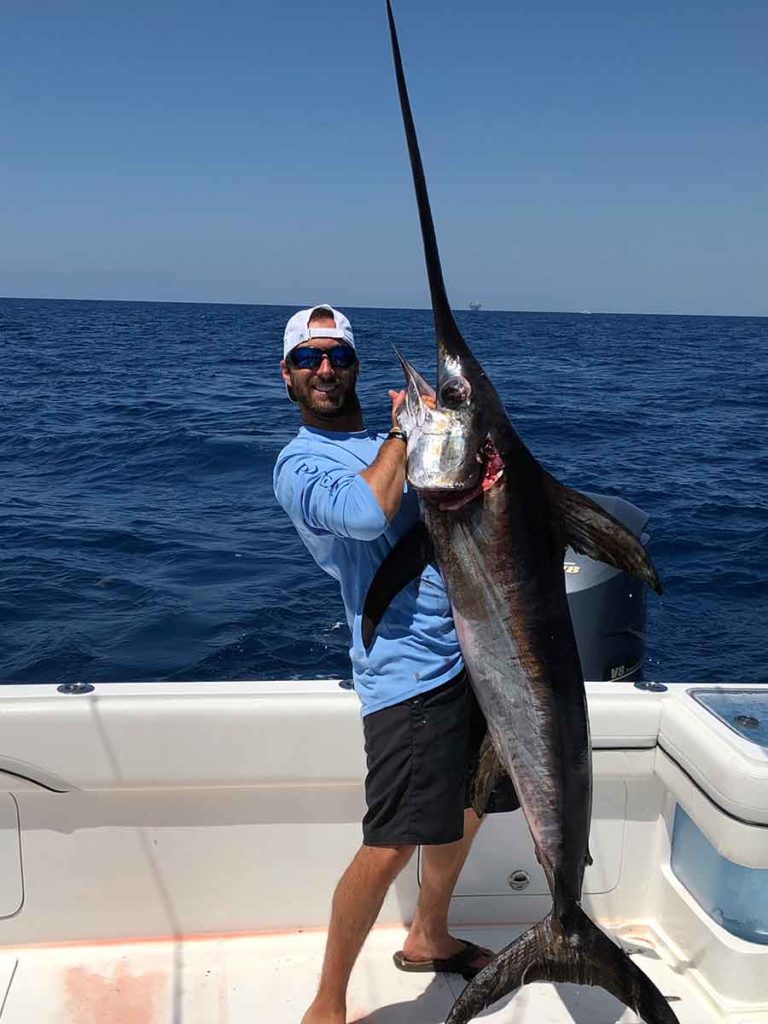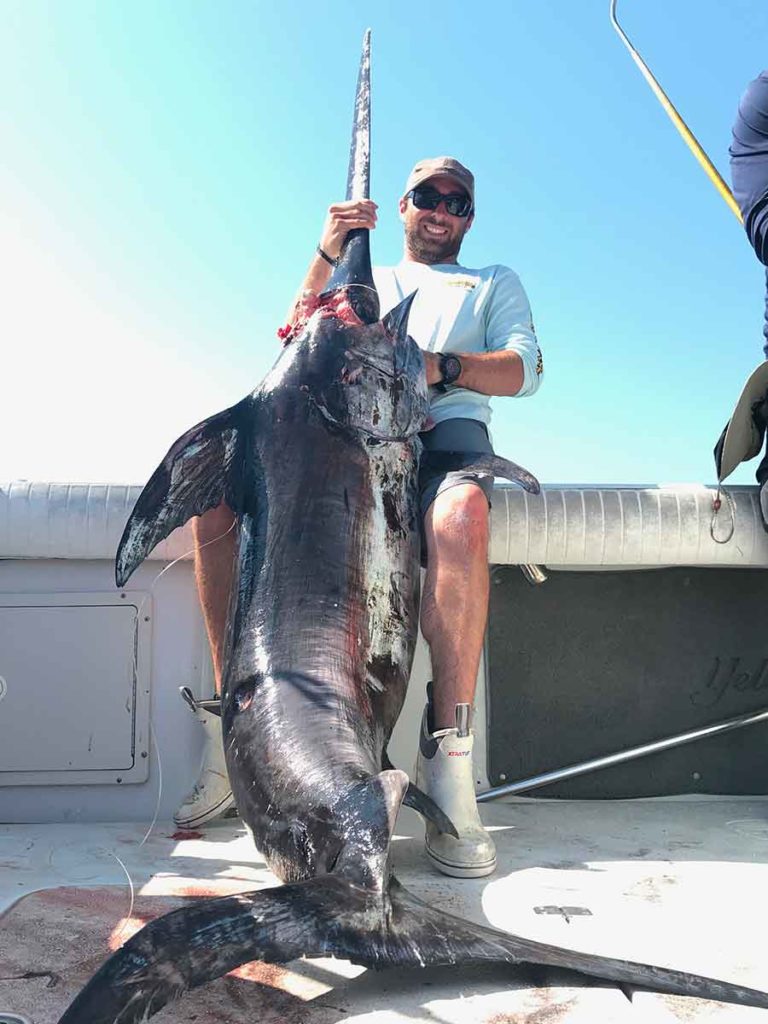CALL the CAPTAIN
Daytime swordfishing is the latest trend in big game sportfishing to hit the Louisiana gulf coast. This technique, originally pioneered off the Florida Keys, involves the use of heavy-duty electric reels and up to 15 pounds of weight to fish baits at depths of 1,600-1,800 feet. Swordfish are powerful, relentless predators that fight to the death and grow to sizes over 1,000 pounds.
Unlike tuna fishing in Venice, Louisiana – charter guides fishing for swordfish during the day aim to catch one to three fish over the course of the day. The average swordfish caught in Louisiana Gulf waters during the daytime ranges from 100 to 200 pounds. However, some daytime swordfishing trips resulted in a few weighing well over 350 pounds.


Captain Hunter Caballero learned daytime swordfishing techniques directly from the talented offshore anglers who pioneered the sport in South Florida. While Marlin live near the Gulf of Mexico’s surface, swordfish will stay further below the surface. Daytime swordfishing charters need to fish deeper near the deep scattered layer (DSL).
Reeling in trophy fish is never a sure thing. However, experienced fishing guides improve your chances of catching the big one. The daytime swordfish bite in Venice, Louisiana is red hot year-round.
If you’re interested in booking a daytime swordfish charter in Venice, Louisiana – call Captain Hunter directly or fill out the contact form below.
Swordfish are deep water predators caught between 1200’ and 1800’ of water, along ridgelines and drop-offs. Electric reels are recommended.
Swordfishing is a year-round endeavor. The Fall is considered the best time to catch swordfish.


Send a Message Now
By entering your email or booking a trip, you agree to receive Paradise Outfitters emails, including marketing emails, and agree to our Terms & Conditions and Privacy Policy.
By entering your email or booking a trip, you agree to receive Paradise Outfitters emails, including marketing emails, and agree to our Terms & Conditions and Privacy Policy.